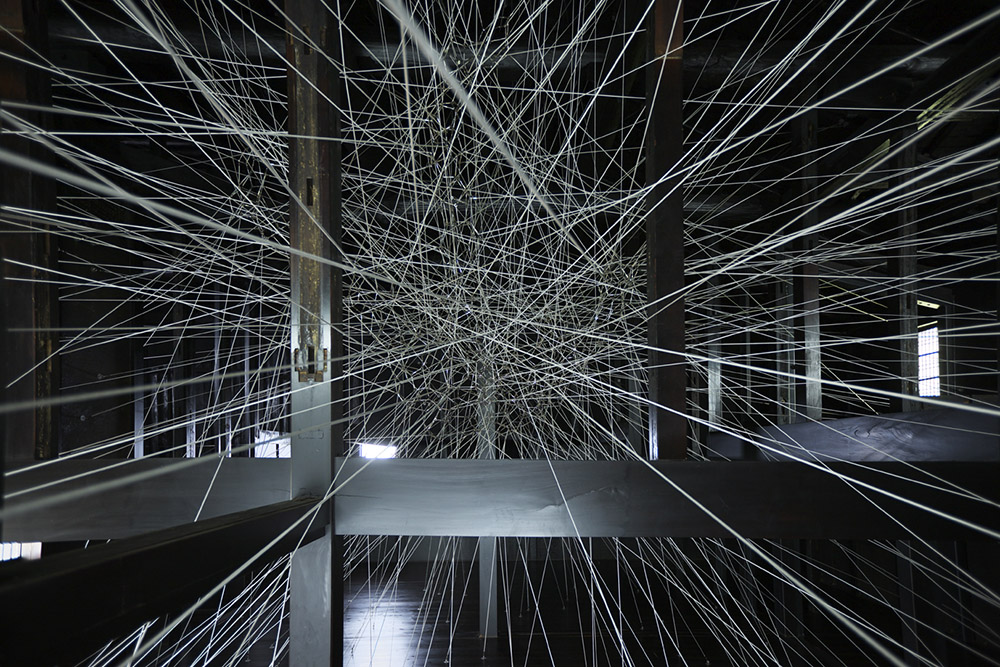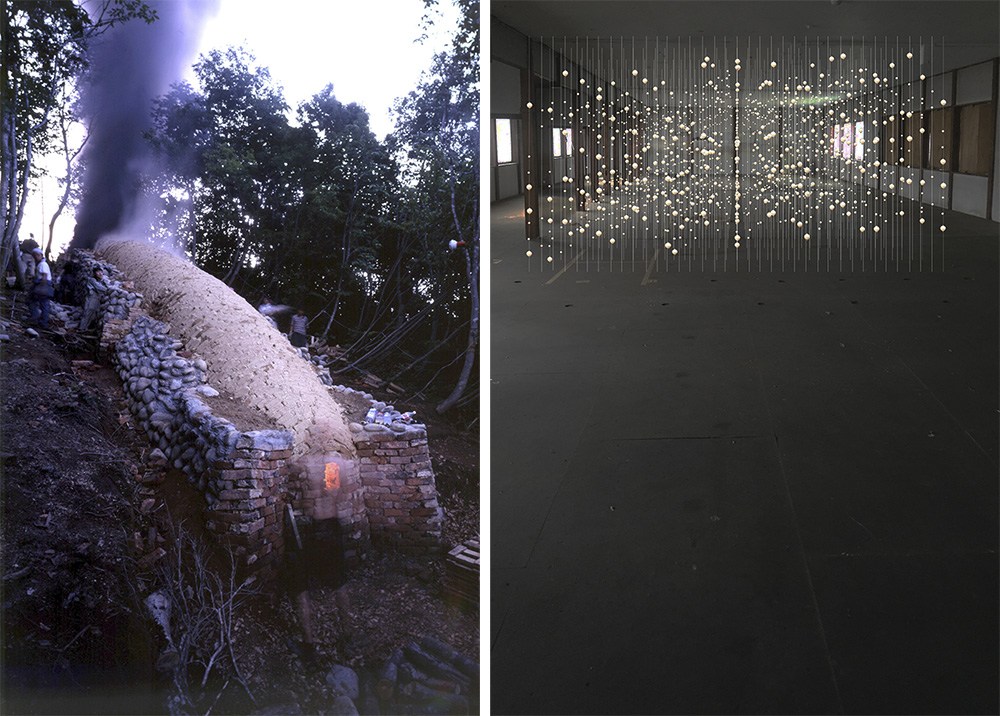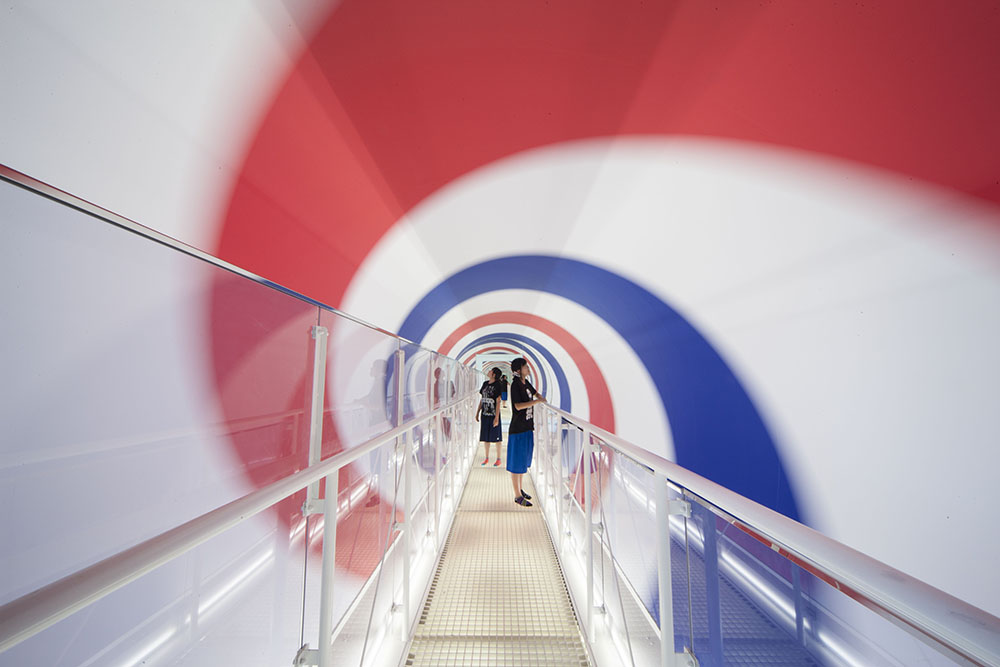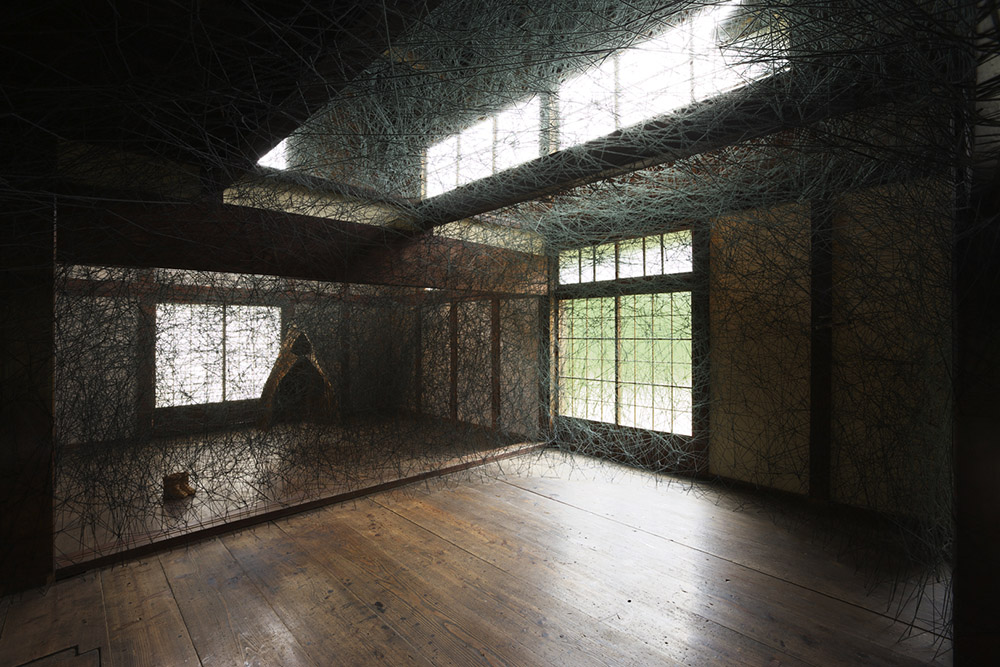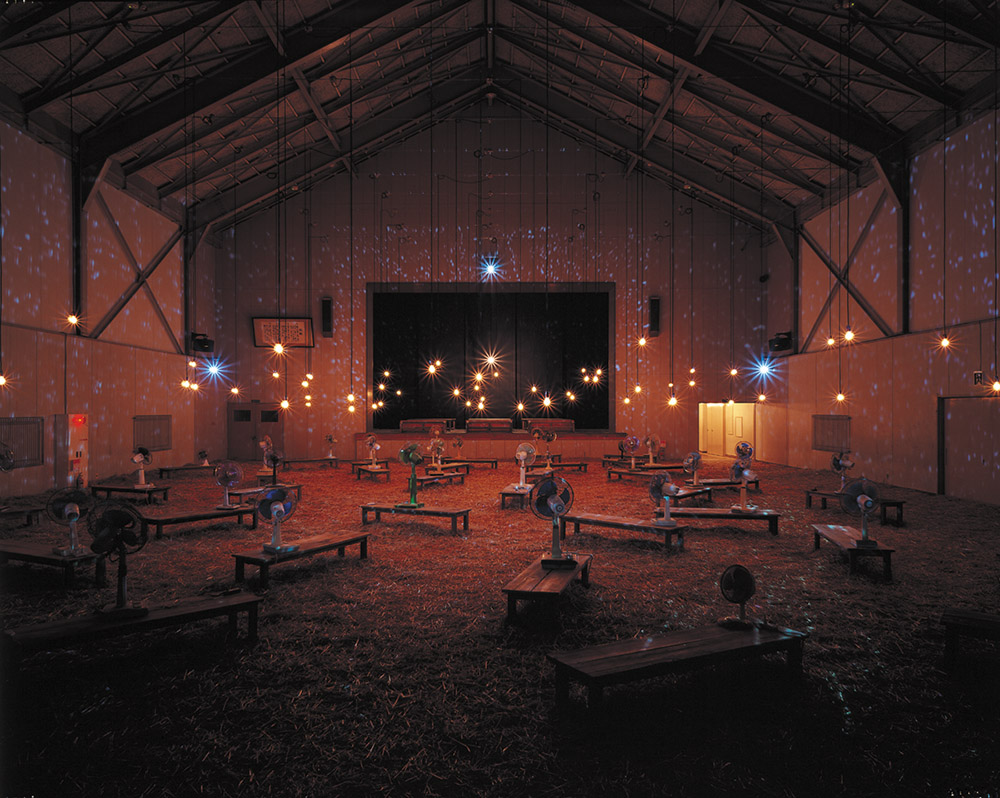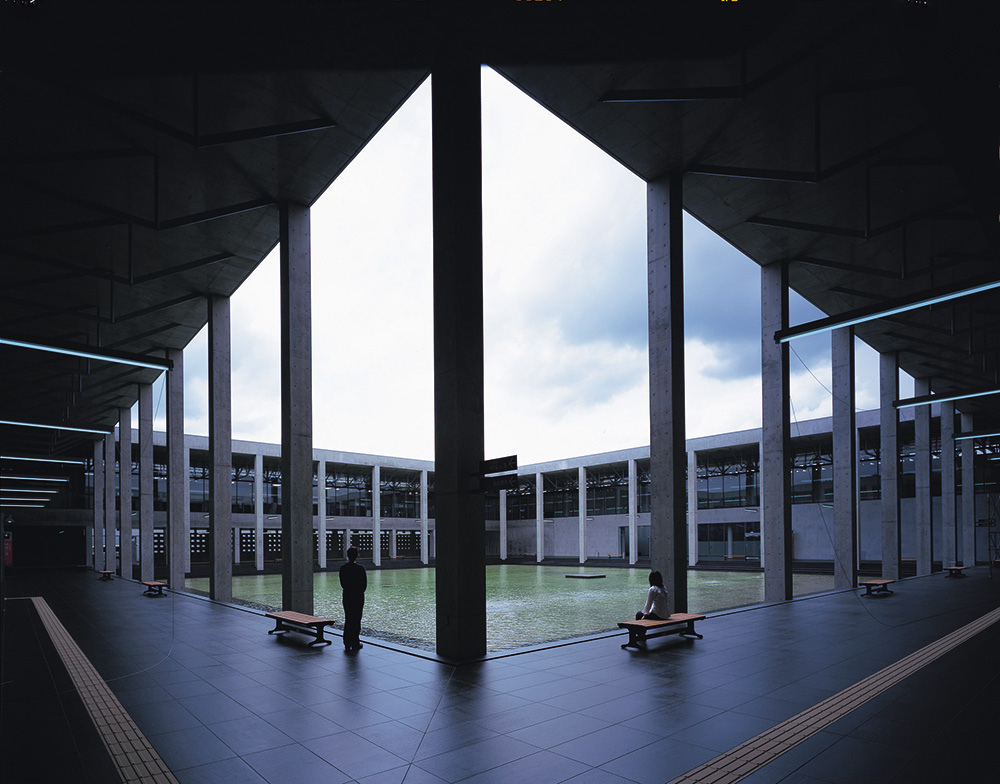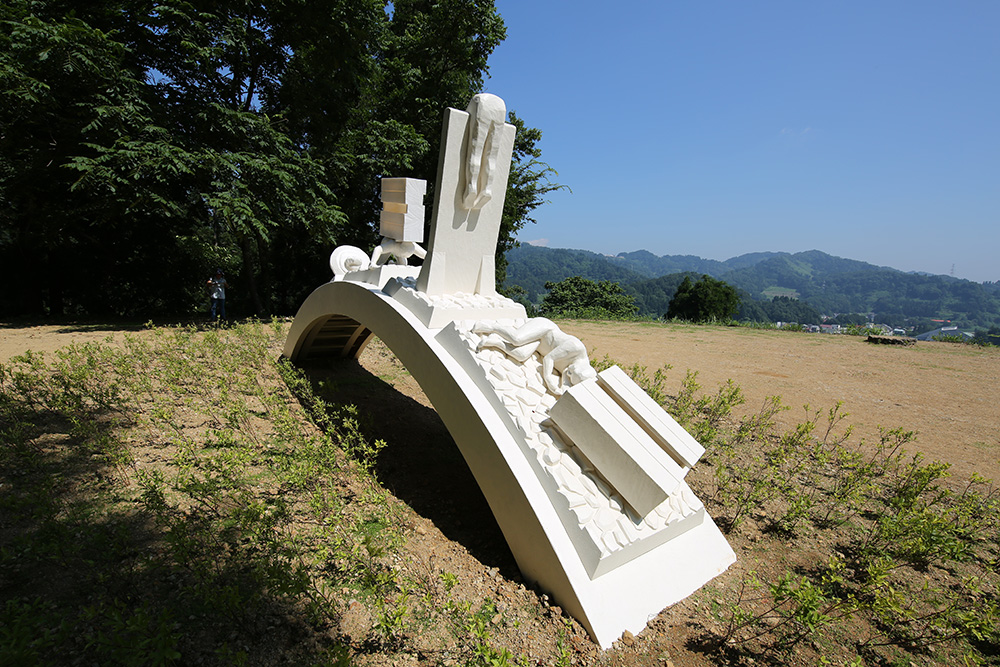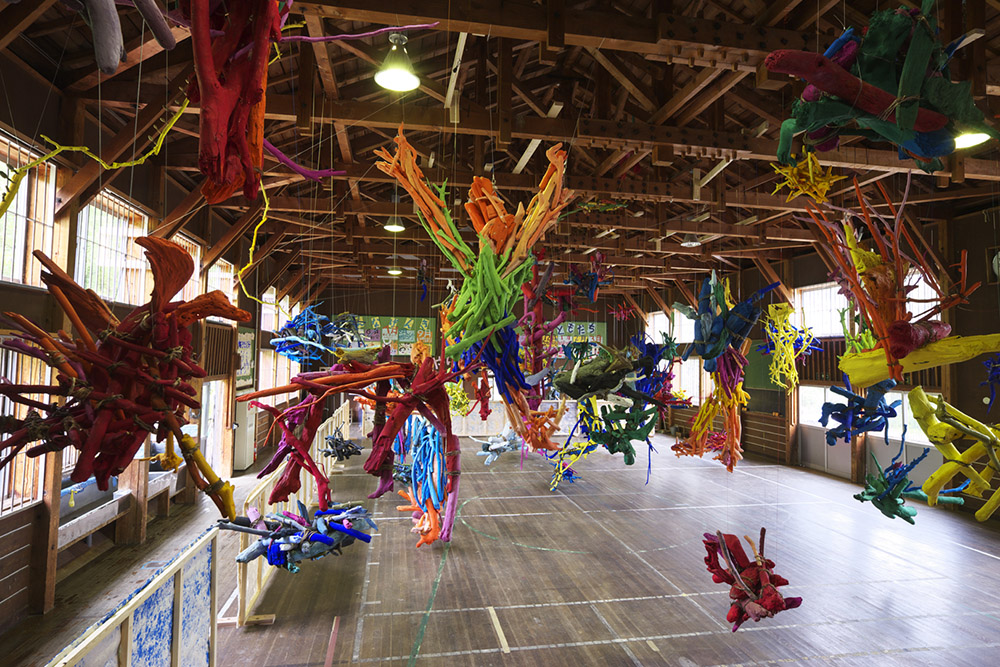BIENNALS:7th Echigo-Tsumari Art Triennale, Part II
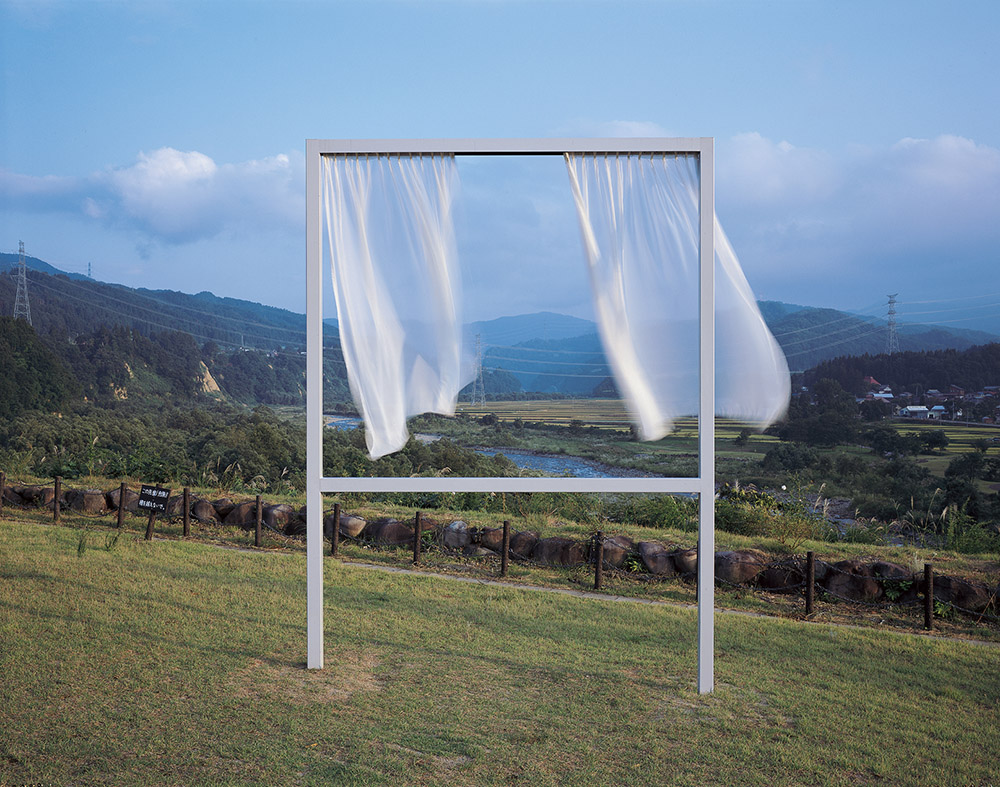 Since inaugurated in 2000, Echigo-Tsumari Art Triennale has been held throughout the Echigo-Tsumari* region known for its heavy snowfall and distinctive Satoyama* agricultural landscape, which has been suffering rapid ageing and depopulation. At this art festival, which is held once every three years, contemporary artworks are exhibited in locations such as the semi-natural satoyama woodlands, rice terraces, settlements and closed schools in the Echigo Tsumari area of Niigata Prefecture. The Triennale represents a new approach to regional revitalization through art (Part I).
Since inaugurated in 2000, Echigo-Tsumari Art Triennale has been held throughout the Echigo-Tsumari* region known for its heavy snowfall and distinctive Satoyama* agricultural landscape, which has been suffering rapid ageing and depopulation. At this art festival, which is held once every three years, contemporary artworks are exhibited in locations such as the semi-natural satoyama woodlands, rice terraces, settlements and closed schools in the Echigo Tsumari area of Niigata Prefecture. The Triennale represents a new approach to regional revitalization through art (Part I).
By Efi Michalarou
Photo: Echigo-Tsumari Art Triennale Archive
Divided into six blocks, the entire Echigo Tsumari area acts as a venue for Echigo-Tsumari Art Triennale (ETAT). Each block is dotted with facilities such as Art Museums and accommodations using repurposed closed school buildings, and festival features such as artworks blended into rural life. Visitors can fully enjoy artworks while basking in Japan’s rural landscape. In total, about 360 works by the artists, architects, and performers from 44 countries are unfolded over 760 square kilometers of the land. For the 7th edition, about 160 new works will be created in addition to over 200 existing works created by artists like: Marina Abramovic, Christian Boltanski, Cai Guo-Qiang, Anthony Gormley, Ilya & Emilia Kabakov, James Turrell, Yayoi Kusama etc. The visitors interact with the works, and with the region and local people, while traveling from one work to the next. The journey allows the visitors to reexamine global environmental approaches, and expand the dialogue of how people relate to nature. An over hundred-year-old house in Uwayu village, known for deep snowfall in winter was turned into “Dream House” by Marina Abramović for ETAT2000. The artwork serves as an accommodation and invite guests to dream a dream while sleeping in special sleeping suit in a unique bed. Guests then keep record of their dream which becomes a part of “Dream Book”. Dream House was damaged by a huge earthquake hit the region on 12 March 2011 but re-opened in time for the ETAT2012 thorough repairs. The first edition of “Dream Book” was published in 2012. A new version of Christian Boltanski’s work “Le thêatre d’ombre” will be added to “The Last Class”, a large-scale installation that has been set in the entire building of former Higashikawa Primary School since 2006. Projected on the wall of darkened classrooms are shadows of skeletons, bats, angels – creatures that mediate life and death. They appear to be fantastic, humourous and playful but these creatures playing and dancing in the light and shadow also imply “a death which could happen to anybody”. “Toro de Osborne” appears in the Yumoto village. This 10m-tall black signboard is a well-recognised symbol in Spain where Santiago Sierra is originally from. It is set amidst nature on top of a hilly area, standing bravely like a narrow shadow. What would this symbol of Spain with her different history and culture represent in the familiar landscape of Echigo-Tsumari? The artist who has been questioning the operation of power in the civilised world across history poses a question on the significance of the signboard. The installation “Grove” is inside a garage in Mountain Park, that has a high-snow resistant kamaboko-type (arched) roof often found in this region, Jun Honma has collected a forest of 7000 used pencils. Looking through the window opposite the doorone can see a pond and forest that form a part of natural landscape overlap the forest of pencils. During a two-week stay in Echigo-Tsumari, Chiharu Shiota created “House Memory”, the artist filled the inside of vacant houses from floor to ceiling with a web of black yarn. Woven into the web were objects collected from local villagers that “They aren’t using, but can’t throw away.” The memories steeped in the old furniture, clothing, books, and deserted house are carefully spun into the web. The “Rice Field” by Ilya&Emilia Kabakov combines poetry, landscape and sculpture. The poetry describes the traditional agricultureand sculptures of traditional rice farmers are placed on the opposite bank. Seen from the viewing platform in Nobutai village, text and sculpture seem to form a single painting. Based upon a story of a new picture book, “Kiss & Goodbye” in Tokamachi area, Jimmy Liao presentes artworks inspired by a kamaboko-shaped warehouse adjacent to Doichi and Echigo-Mizusawa stations. Installations, original drawings, footage and music in the warehouses communicating a message of the picture book story of a little boy who lost his parents gains courage to live life as he travels with his dog on the train to visit his grandfather. Arin Runjiang’s film “Rice” features farmers in Japan and Thailand highlighting stories of two individuals engaging with the same occupation in different environments in different countries. Under the overarching theme of rice, which has a long history in both countries, the film also refers to contemporary social phenomena such as war, economic stagnation and the increasing suicide rate. The 2018 Triennale offer the official bus tour with two courses: the Satoyama and civil engineering course and the Shinanogawa river terrace course. Each course will highlight new and major works, the landscapes and livelihood fostsered through great efforts of agriculture to produce rice and survive in the severe nature, and provide special lunch.
* Satoyama is the traditional Japanese lifestyle of living in harmony with nature, which can be felt when travelling along the countryside with its small farming villages, terraced rice fields and farmers working in the fields in old fashioned straw hats.
Info: Echigo-Tsumari Art Triennale 2018, Tokamachi City, Tsunan Town, Niigata Prefecture, Duration: 29/7-17/9/19, www.echigo-tsumari.jp
